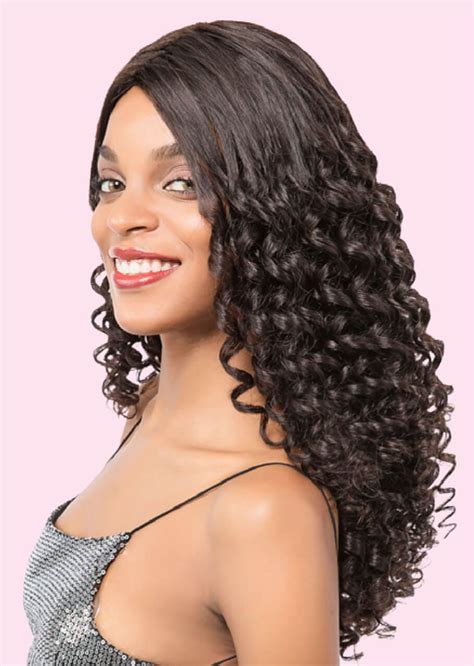Hair thinning is a common issue that affects millions of people worldwide. The causes of hair thinning range from genetics to hormonal imbalances to medical conditions. While there are various treatments available, hair thinning extensions offer a non-surgical, customizable solution to volumize and conceal thinning hair.

Understanding Hair Thinning Extensions
Hair thinning extensions are artificial strands of hair that are attached to the natural hair to add volume and thickness. They are usually made of synthetic or human hair and come in a wide range of colors, lengths, and textures to match the existing hair.
Extensions are attached to the hair using different methods, including:
- Clip-ins: Removable extensions that can be clipped in and out as needed.
- Tape-ins: Thin polyurethane tape strips that are sandwiched between the natural hair and the extensions.
- Fusion: Extensions that are bonded to the natural hair using heat or glue.
Benefits of Hair Thinning Extensions
- Increased volume and thickness: Extensions instantly add volume to thinning hair, creating a fuller and more youthful appearance.
- Concealment of hair loss: Extensions can effectively conceal bald patches or areas of thinning hair, restoring confidence and self-esteem.
- Versatility: Extensions allow for experimentation with different hairstyles and colors, providing a limitless range of styling options.
- Non-surgical solution: Unlike hair transplants or other surgical procedures, extensions offer a non-invasive and reversible way to address hair thinning.
- Temporary or permanent: Depending on the attachment method, extensions can be worn temporarily or permanently, catering to different preferences and needs.
Choosing the Right Hair Thinning Extensions
Selecting the right hair thinning extensions is crucial for achieving a natural-looking and comfortable result. Consider the following factors:
- Hair type: Choose extensions that match the texture and porosity of your natural hair for a seamless blend.
- Length and density: Determine the desired length and fullness of your hair, and select extensions that meet those requirements.
- Color: Opt for extensions that closely match your natural hair color, or consult with a professional stylist for color matching.
- Attachment method: Choose a method that suits your lifestyle and preferences, considering the durability, maintenance, and cost.
Maintaining Hair Thinning Extensions
Proper maintenance is essential for the longevity and overall health of hair thinning extensions. Follow these tips:
- Brush gently: Use a soft-bristled brush to avoid tangling and damage to the extensions.
- Wash and condition: Wash extensions less frequently than natural hair, using sulfate-free products specially designed for extensions.
- Avoid heat styling: Minimize heat exposure to prevent weakening the bond between the extensions and natural hair.
- Get regular trims: Trim split ends regularly to maintain the health and appearance of the extensions.
Important Considerations
- Consultation: Consult with a professional hairstylist to determine if hair thinning extensions are right for you and to choose the most suitable options.
- Health concerns: Hair thinning can be a symptom of underlying medical conditions. Consult with a doctor to rule out any potential health issues.
- Cost: Hair thinning extensions can be expensive, depending on the type, amount, and attachment method used. Factor this into your budget considerations.
Frequently Asked Questions (FAQs)
1. How long do hair thinning extensions last?
The lifespan of extensions varies depending on the attachment method. Clip-ins can last for several months, tape-ins for 4-8 weeks, and fusion extensions for 3-6 months.
2. Can I style hair thinning extensions?
Yes, you can style extensions as you would your natural hair. However, avoid excessive heat or harsh chemicals to prevent damage.
3. Are hair thinning extensions noticeable?
When applied professionally and matched properly, hair thinning extensions should blend seamlessly with your natural hair, making them virtually undetectable.
4. Can I wear hair thinning extensions during exercise or swimming?
It’s advisable to remove clip-in extensions before strenuous activities, while tape-ins and fusion extensions can typically withstand moderate exercise. Avoid swimming with extensions to prevent water damage and tangling.
5. What is the best way to remove hair thinning extensions?
Consult with a professional hairstylist to remove extensions safely and without damaging your natural hair.
6. Can I color or chemically treat hair thinning extensions?
It’s generally not recommended to color or chemically treat extensions as they may react differently than natural hair. Seek professional advice before attempting any alterations.
7. How much do hair thinning extensions cost?
The cost of extensions varies widely depending on the type, amount, and attachment method. Expect to pay anywhere from a few hundred dollars to several thousand dollars for a full set.
8. Are hair thinning extensions right for me?
Hair thinning extensions are a suitable option for individuals who want to volumize and conceal thinning hair without surgery. Consult with a professional hairstylist to determine if this solution is right for your specific needs and hair type.
